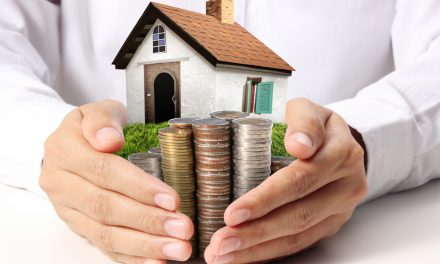Is California at risk of a housing bubble?
All the usual culprits are present. Rapidly rising prices, slowing sales volume and an increasing presence of real estate speculators. Mortgage fraud also rises in the lead up to a crash, as individuals and investors blur numbers in order to qualify at higher prices.
Of the nation’s largest metros, certain significant Southern California (SoCal) markets are in particular danger of a bubble.
Topping off the list, CoreLogic regards Orange County as the riskiest housing market in the nation, a dubious distinction to be sure. The rest of the highest risk markets are in Florida or other parts of California, with Los Angeles and Riverside counties rounding out the top of the list.
Markets are classified as high- or low-risk based on:
- home price growth since January 2012;
- rent growth since January 2012;
- the share of home flips in the market, a direct indication of speculator activity; and
- the amount of mortgage fraud reported in each area.
California’s high-risk markets all rank near the top of CoreLogic’s flipping and fraud indices. Further, since January 2012:
- in Orange County, home prices have increased 50% and rents are 24% higher;
- in Los Angeles County, home prices have increased 63% and rents are 22% higher; and
- in Riverside County, home prices have increased 65% and rents are 21% higher.
Further down the list of risky housing markets, the Oxnard-Thousand Oaks area actually has the highest mortgage fraud index figure in California. CoreLogic’s Mortgage Fraud Index was 202 in the Oxnard area as of the first quarter (Q1) of 2017, while the nationwide average was 132.
Is a bubble likely?
The Millennium Boom taught real estate professionals (as well as anyone who lived in a home, had a job, or was otherwise conscious) the danger of housing bubbles.
As of April 2017, California home prices average:
- 4% higher than a year earlier in the high tier;
- 7% higher than a year earlier in the mid tier; and
- 9% higher than a year earlier in the low tier.
To stay out of bubble territory and remain sustainable, price increases need to remain near income growth. Like a fire without fuel, without a tandem increase in income growth, a rise in home prices has no shot at long-term longevity. Home prices can only rise so far as homebuyers are able to pay. Absent any decrease in mortgage interest rates, homebuyers are solely reliant on income to increase their homebuyer purchasing power to keep up with home prices. Without fundamentals in place, you’re just left with a bit of sizzle and smoke.
Median household income increased 4.1% in 2015, according to the latest Census data. While this is enough to keep up with the reduced increase in high-tier homes, it falls far below what is needed for most homebuyers, especially for that all-important demographic — first-time homebuyers.
The magnitude of home price increase in the mid and low tiers is troubling. But the latest efforts by the Federal Reserve (the Fed) to cool off increases in the housing market and other sectors of the economy is a positive step in the correct direction. The Fed’s efforts are focused on increasing interest rates and — likely later in 2017 — beginning to sell off its significant portfolio.
The Fed’s actions, along with an already slowing home sale volume, will pull back home prices closer in line with incomes, lancing the dangerous bubble before it bursts.
However, there is one complication everyone needs to keep an eye on — lending policies that allow for looser credit.
The last housing bubble was propelled primarily by lenders granting mortgages to anyone and everyone who applied, no income documentation required. This enabled homebuyers to buy well beyond their means, and ultimately their ability to pay.
In 2017, most buyer-occupants remain protected from overreaching on their mortgage due to the ability-to-repay rules enacted in 2014. Still, watch out for higher rates of mortgage fraud and excessive access to credit. When deregulation next occurs, whether it be in 2018 or ten years from now, the next bubble will ultimately follow. It’s axiomatic.



















